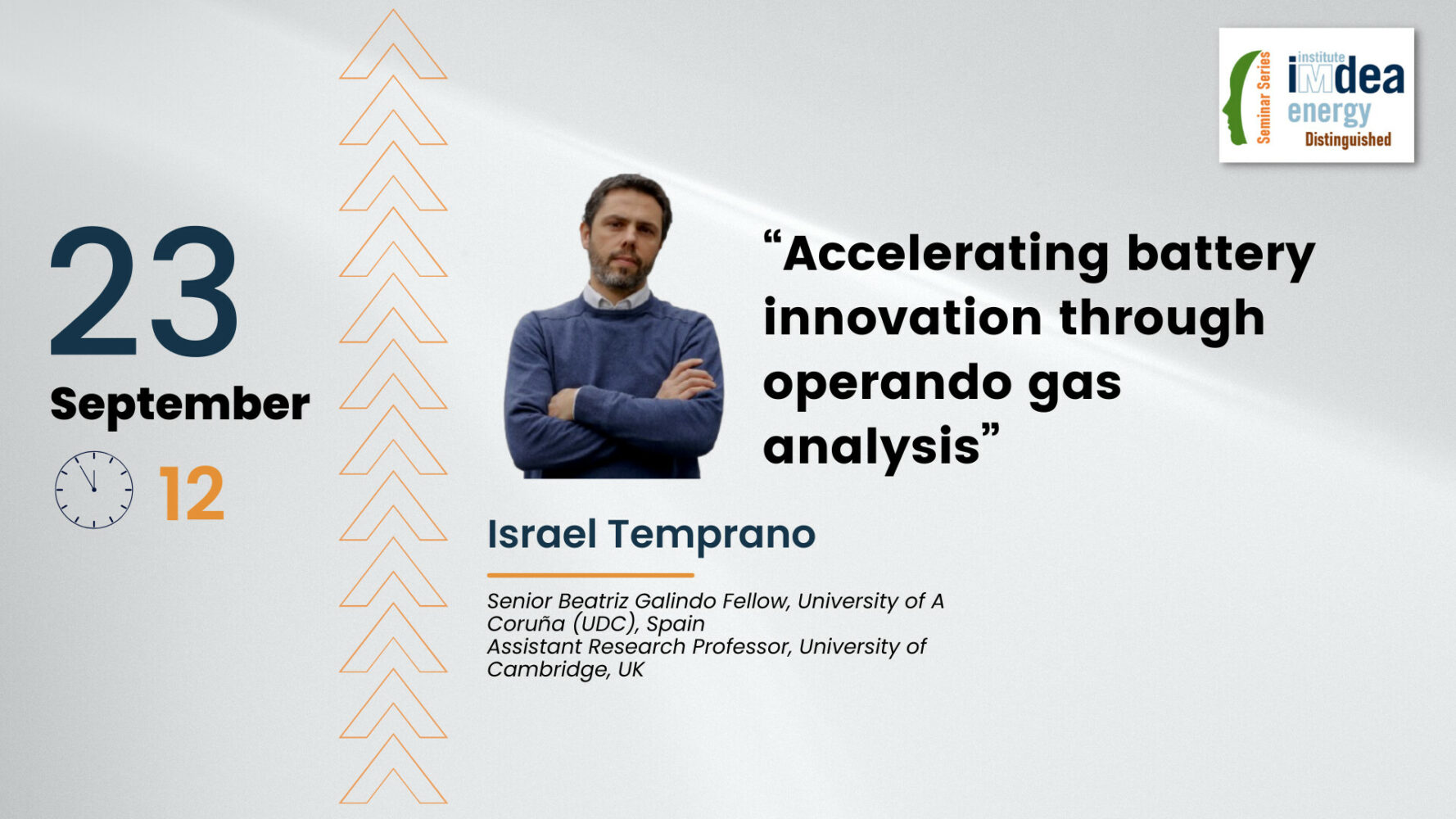Distinguished seminar: «Accelerating battery innovation through operando gas analysis»

Short Bio
Israel Temprano graduated as BSc in Chemestry at the University of A Courña (UDC), and then he did his MSc and PhD in Physical Chemistry at Université Laval (Canada). He then moved to the UK, first at the University of Liverpool as Marie-Curie PDRA, and then University of Cambridge as PDRA and later Senior Research Associate.
Currently, he is a Senior Beatriz Galindo Fellow at the UDC & Principal Investigator (PI) of the Energy Transition Systems Laboratory (LISTE) at CICA, as wll as the Director of the UDC-Resonac Sparking Truth Chair. He is also Assistant Research Professor and PI at the University of Cambridge, PI at ALISTORE-ERI (EU), and Research Fellow of The Faraday Institution (UK).
Abstract
The comprehensive understanding of interface formation and evolution remains one of the most important challenges for rapid battery innovation, as these interfaces play a pivotal role on both performance and safety [1]. The gas evolution signature of interfacial processes can be highly informative, and operando gas analysis techniques have become an essential tool for accelerating battery innovation [2-6]. Electrochemical mass spectrometry (EMS) can provide quantitative information of individual processes occurring in the cell, as well as their interconnectivity (e.g, cathode-anode crosstalk and anode slippage) with highly sensitivity and resolution [1]. Online electrochemical mass spectrometry (OEMS), in particular, can show the nature, onset, extent and interconnectivity of parasitic reactions leading to cell aging using very short test protocols. This showcases the need for better understanding of such processes in order to accurately target solutions to accelerate materials innovation batteries.
References
- Temprano, I., et al., Advanced methods for characterizing battery interfaces: Towards a comprehensive understanding of interfacial evolution in modern batteries.Energy Storage Materials, 2024. 73: p. 103794.
- Rinkel, B.L.D., et al., Electrolyte Oxidation Pathways in Lithium-Ion Batteries.Journal of the American Chemical Society, 2020. 142(35): p. 15058-15074.
- Dose, W.M., et al., Electrolyte Reactivity at the Charged Ni-Rich Cathode Interface and Degradation in Li-Ion Batteries. ACS Applied Materials & Interfaces, 2022. 14(11): p. 13206-13222.
- Dose, W.M., et al., Onset Potential for Electrolyte Oxidation and Ni-Rich Cathode Degradation in Lithium-Ion Batteries. ACS Energy Letters, 2022. 7(10): p. 3524-3530.
- Páez Fajardo, G.J., et al., Synergistic Degradation Mechanism in Single Crystal Ni-Rich NMC//Graphite Cells.ACS Energy Letters, 2023: p. 5025-5031.
- Wang, R., et al., Influence of Carbonate Electrolyte Solvents on Voltage and Capacity Degradation in Li-Rich Cathodes for Li-ion Batteries.Advanced Energy Materials, 2024. 14(32): p. 2401097.
-
00
days
-
00
hours
-
00
minutes
-
00
seconds


